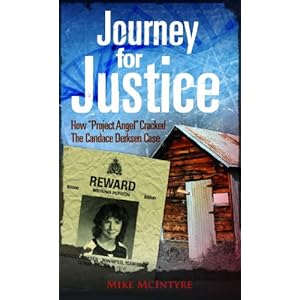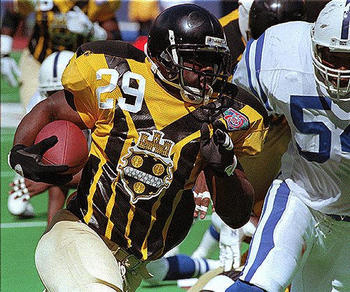I was lucky enough to attend quite a few plays when I was in University. My Intro to Theatre course required me to see some over the school year and critique them. That's why this blog reminds me of writing a University paper again.
Dionysus in Stony Mountain is a two act play featuring two actors: Sarah Constible and Ross McMillan. Sarah plays Heidi, a psychiatrist at the Stony Mountain Penitentiary and Ross plays James a prisoner who is close to making parole in act one and Eric, Heidi's uncle, in the second act.
The first act is gold. You can tell that the two actors are very familiar with each other and the scene, considering they performed it at the Fringe Festival a few years ago. Questions are brought up that make the audience think. Are we helping the mentally ill? Is throwing them in prison a worthy decision? Does this really heal them? Or make them worse? In the first act, James decides not to take his medication and actor Ross McMillan does an an excellent job of acting the part. Playwright Steven Ratzlaff writes the part beautifully. James focuses on German philospher Friedrich Nietzsche. His words become the bible for him.
The second act expands. It features Heidi, who has now quit her job at the facility, just like she promised James if he agreed to start his meds and make parole. Her life has taken a downward spiral and she questions what the purpose of our prison system is. Uncle Eric tries to convince her to visit her parents in Florida. At first she is hostile, but as the act progresses, Eric reveals that her mom once attempted suicide. In return, Heidi tells Eric that James committed suicide in the worn down apartment where the act takes place. The two start to bond, and the play ends with the two working on fixing the apartment walls together.
The second act is more of an afterthought than anything else. I like sequels, because I want to know how things end for characters. But this didn't set well with me. The two acts have completely different tones and feel like two separate plays. One questions the system we live with, the other one does show the results, but in a very dark and dramatic tone. Perhaps this was the best way to tell it, and I might not have gotten the full grasp of the production.
Regardless, the second act grabbed my attention, and made me think about a lot of our values. Mission accomplished on their part.
I appreciated the local setting. When I would come to Winnipeg with my family as a kid, we'd pass that very penitentiary every time. I was able to place a visual on where it was all taking place. Even in the second act that takes place in an apartment building on Maryland north of Portage. I live just a few streets away from there. I was able to take the locations and turn them into visuals. However, I didn't think it was necessary to name drop the Liquor Mart and Safeway in the plays. As amusing as it was for the audience, it didn't add anything to the play.
Overall, it was a good production. You can tell the entire crew put a lot of time and effort into the play, which is what you expect from all of the theatre you see. I give a lot of credit to Ross McMillan and Sarah Constible. They played their characters excellently, and you could tell they knew who their characters were. I could imagine this would be difficult for Sarah too considering she does play the same character in both acts, but both with very different mindsets.
Slammers and Pogs
Remember the 90's?
Tuesday, April 10, 2012
Friday, March 30, 2012
Journey For Justice: My experience reading McIntyre's books
On March 22nd, I had the honour of listening to Mike McIntyre talk about his latest true crime book Journey For Justice. The story depicts the case of Candace Derksen's murder and the eventual guilty verdict Mark Grant would face over 26 years later. The icing on the cake was listening to Candace's mother, Wilma, talk about the murder.
The story is about many things. Justice. Breakthrough in forensic science. Murder. But most importantly, it's about the things that Wilma teaches us in the book. Forgiveness. Love. Faith. All of these things brought her and her family together in a time they needed it the most. I could never imagine going through what Mrs. Derksen and her family went through. It's something that most people wouldn't even wish on their worst enemies. I've realized this even more after reading the book because we look into a window that shows us the past. We're able to see how the Derksen family and the community dealt with the disappearance of Candace, all the way to the verdict on Mr. Grant many years later. Because of his writing, Mr. McIntyre allows us such an indepth look at what happens during all of these critical moments that can make or break a person.
Mr. McIntyre and Mrs. Derksen each brought a unique perspective to the seminar.
Mike talked a lot about what it was like interviewing many of the people not only in this book but some of his others. He briefly discussed one of his other books Devil Among Us, the story about Peter Whitmore's constant prison visits and gave excellent perception on Canada's revolving door justice system. Whitmore kidnapped a boy in Manitoba and Saskatchewan and held them hostage for his own sexual gain. McIntyre drove out to Saskatchewan in hopes of interviewing the Saskatchewan boy's father. At the time, none of the family was addressing the media. McIntyre was successful. That's the drive of the journalist that I want to become. He told us how to be respectful of the people we interview, especially with such a touchy topic. However, if done correctly, if a journalist can show their target that they are just a human being too, anything is possible.
Wilma Derksen was amazing to listen to. I wish we had more time to talk to her. She's filled with so much love and kindness and it makes me angry that Mark Grant was able to do this to such a sweet woman's family. Wilma was indeed frustrated throughout the entire process back in the 80's, which is normal. But it's easy to tell that she was the same person then as she is now. It's natural for someone to be intrigued by Wilma. She has a story that none of us could imagine telling, never mind living it.
Journey For Justice works because it tells a real story. I'm obsessed with true crime. I love the detail that is put into the books. No stone is left unturned. I really enjoyed how Mike set up the book with the present day Mark Stone just days before he was arrested for the murder of Candace. It was a good way to "tee it up" so-to-speak and makes for a more interesting read rather than telling the story in chronological order.
The detail was great, however, sometimes it can be overbearing. This happened in Journey For Justice too. Part 2 describes who Mark Stone is. This led to a lot of reports from doctors in the middle of the book. While this information is important, it was hard to read jargon after jargon from doctors analyzing Stone's mind while in prison. I felt that this would have been a good time to "show, don't tell". However, that would be hard to do when Stone has still never admitted to the crime despite being sentenced to prison. Mark would never want to be interviewed for a book about how he murdered a young girl. That's why the reports are there.
As a young journalist, I know I can learn a lot from this book. Writing for crime can be very hard, because there are many regulations and rules you must follow while writing about a court case. You cannot be biased. Not even in the slightest. Even though Mike wrote this book knowing that Mark Stone would be guilty, he needed write the book like a story. That means that Stone is innocent the entire book, until he was proven guilty at the end. Mike can't go out on a limb in the book, or in any of his other articles about how an individual is guilty. This can be hard to do, because I find that when reading the news, people can easily get the perception that someone is guilty even if they are in the middle of trial. (See: Mark Stobbe). Mike can only write about what happens in the court room, and nothing else. I also really enjoyed that Mike included how the jury was selected. It's a process that many of us don't know a lot about, and I like how Mike stressed how important it is to find 12 individuals who will be absolutely neutral in the case. That can be a very hard thing to do when the media can easily make out someone to be guilty before trial even begins.
McIntyre tells the story in the most neutral way possible. I really appreciate that he, being a journalist, has written true crime books because he is a credible source. There are plenty of true crime books pumped out each and every year. Many of these people have no journalistic experience, and are simply out there to try and publish their book first and make money. This leads to less research and an overall less appealing book. Mike even talked about how he'd rather take his time writing the book to make sure it's correct, rather than being the first book out there. An example of one of these other books that I've read recently is called The Boston Stranglers by Susan Kelly. In her book, she claims that Albert DeSalvo, known as the Boston Strangler, admitted to killing 11 different women because he wanted the fame. Rather, it was up to 8 different people who killed the women. While, it could very well be likely this is true, Kelly is an author first and a journalist second. She's published works of fiction and non-fiction and I had a hard time believing some of the book since it was based on a conspiracy theory. McIntyre's work is real. He was there for the verdicts. He knows crime so well, and has become a source of knowledge that I trust.
If you've never read any other books by McIntyre. I really suggest you do. Journey For Justice tells a story about a family and how they stuck together. However, many of his other books involve a lot more detail in the killings, robberies or whatever crime was committed. If you're into that type of detail, then you will likely enjoy some of his other work. True crime amazes me, but what I love the most about McIntyre's books is that they're all local and hit close to home.
Here they are:
Devil Among Us - The story of Peter Whitmore and the revolving door justice system. Focuses on two boys he kidnapped from Manitoba and Saskatchewan and the sexual abuse he put them through.
To The Grave - The amazing RCMP sting that took place in Brandon, MB. Erin Chorney tells her mom she'll be back in an hour, but never returns. Police go undercover to find out the truth of what happened to Erin.
The Yultide Bandit - Michael Syrnyk's robberies happened year after year around Christmas time. He is captured in a stand-off with police. You might recall his bank heist at Polo Park Shopping Centre in 2000.
Nowhere to Run: The Killing of Dennis Strongquill: The shooting of the Constable Dennis Strongquill and the hunt for the group of people that killed him takes police all the way to Alberta.
Wednesday, March 21, 2012
Red River College's Magazine Fair
Red River College's Magazine Fair is coming up once again!
What is it, you may ask? Well, I've never been, but I know it's where 75 first-year CreComm students will be in their magazine groups showcasing their work. For the past 3 months we have all literally put our blood, sweat and tears into this project and it's all going to pay off.
If you are in the magazine industry, a student at RRC's Princess St. campus or one of my friend's or family, I encourage you to come out and show your support.
Every one is very proud of their magazines, and there will be lots going on that day. When you do come, be sure to look out for this sign:
That is [modify] Magazine, the magazine that I've been working on with my partners in crime, Megan, Amy and Suzy. [modify] is all about do-it-yourself projects that will improve your style and home.
We're very proud of the product we have created and can't wait to share it with everyone who will be there.
We'll have tons of free swag, a craft table, and of course the magazine for your to look at. PDF copies will also be available to anyone who wants one!
The Magazine Fair will be taking place in the Atrium at Red River College's Princess St. campus from 12-4 on March 30th!
Learn more about our magazine right here right here.
I can't wait to see you there.
What is it, you may ask? Well, I've never been, but I know it's where 75 first-year CreComm students will be in their magazine groups showcasing their work. For the past 3 months we have all literally put our blood, sweat and tears into this project and it's all going to pay off.
If you are in the magazine industry, a student at RRC's Princess St. campus or one of my friend's or family, I encourage you to come out and show your support.
Every one is very proud of their magazines, and there will be lots going on that day. When you do come, be sure to look out for this sign:
That is [modify] Magazine, the magazine that I've been working on with my partners in crime, Megan, Amy and Suzy. [modify] is all about do-it-yourself projects that will improve your style and home.
We're very proud of the product we have created and can't wait to share it with everyone who will be there.
We'll have tons of free swag, a craft table, and of course the magazine for your to look at. PDF copies will also be available to anyone who wants one!
The Magazine Fair will be taking place in the Atrium at Red River College's Princess St. campus from 12-4 on March 30th!
Learn more about our magazine right here right here.
I can't wait to see you there.
Friday, February 3, 2012
The Worst Sport's Uniforms of the 90's
I've been feeling sporty lately, and decided to find some of the most horrendous sport uniforms from the 90's. They go from bad, to worse, to flat out ugly. Take a peek, and I hope you enjoy.
This gem comes from the New York Islanders from the mid 90's. I don't know where to start. Okay, let's start here:
It's common for logos to be intimidating. In all likely hood, it's never going to throw a professional athlete off their game though. They don't go into the arena saying "Oh man, they must be good. They've got a badass and scary looking caricature on their jersey. We're going to lose."
Regardless, it gives the teams brand a good image and one that their fans can be proud of. However this one doesn't help the Islanders look at all. First of all, the bottom stripes look like something that my one year old cousin would be able to draw. I'm sure any graphic designer would make a comment on the colors. Something like "What were they smoking?"
All I can really say is.....What? This is the reason why teams try to brand themselves as looking intimidating, because if you throw all caution (and thought for that matter) to the air, this is what the final product looks like.
This is a long time to have a jersey like this. I'm not exactly sure what the rainbows represent.
And here's some more for your enjoyment!
This last one isn't from the 90's but it deserves a mention, because well...it's just plain bad.
| NHL - New York Islanders - Mid 90's |
It's common for logos to be intimidating. In all likely hood, it's never going to throw a professional athlete off their game though. They don't go into the arena saying "Oh man, they must be good. They've got a badass and scary looking caricature on their jersey. We're going to lose."
Regardless, it gives the teams brand a good image and one that their fans can be proud of. However this one doesn't help the Islanders look at all. First of all, the bottom stripes look like something that my one year old cousin would be able to draw. I'm sure any graphic designer would make a comment on the colors. Something like "What were they smoking?"
 |
| NHL - Anaheim Mighty Ducks - 95-96 |
 |
| NBA - Denver Nuggets - 1981 - 1993 |
This is a long time to have a jersey like this. I'm not exactly sure what the rainbows represent.
And here's some more for your enjoyment!
This last one isn't from the 90's but it deserves a mention, because well...it's just plain bad.
Friday, January 27, 2012
Giga pets: I always killed them
Oh the Giga pet. This was likely most 90's child's first experience of "responsibility" for lack of a better word.
I don't know about you, but I found these things impossible to take care of. They were cute and fun to play with. It's no wonder they were so popular with kids too. Parents could either get a dog or a cat and spend hundreds of dollars on vet bills, food, litter, etc or they could spend 20 dollars on one of these to entertain the children.
 |
| Young and prosperous one day...dead the next. |
They were pretty cool.
Except I couldn't keep them alive for more than a few days.
The toys needed so much attention. My first and only one was a dinosaur that you would raise from an egg up until about day four before it would die and the process would start all over again.
They were interesting toys that taught children about death too. If anything I think this scared me more than anything. I figured all pets, electronic or real, only had a life span of a few days. How horrific would that be?
I used to play hockey and remember some of the guys on my team would bring their giga pets to the bench with them. Now that's commitment. The bloody things needed food or a walk every two minutes anyway. Hockey and Giga pets seemed to be a perfect fit since players were on and off the bench every few minutes anyway.
Subscribe to:
Posts (Atom)







